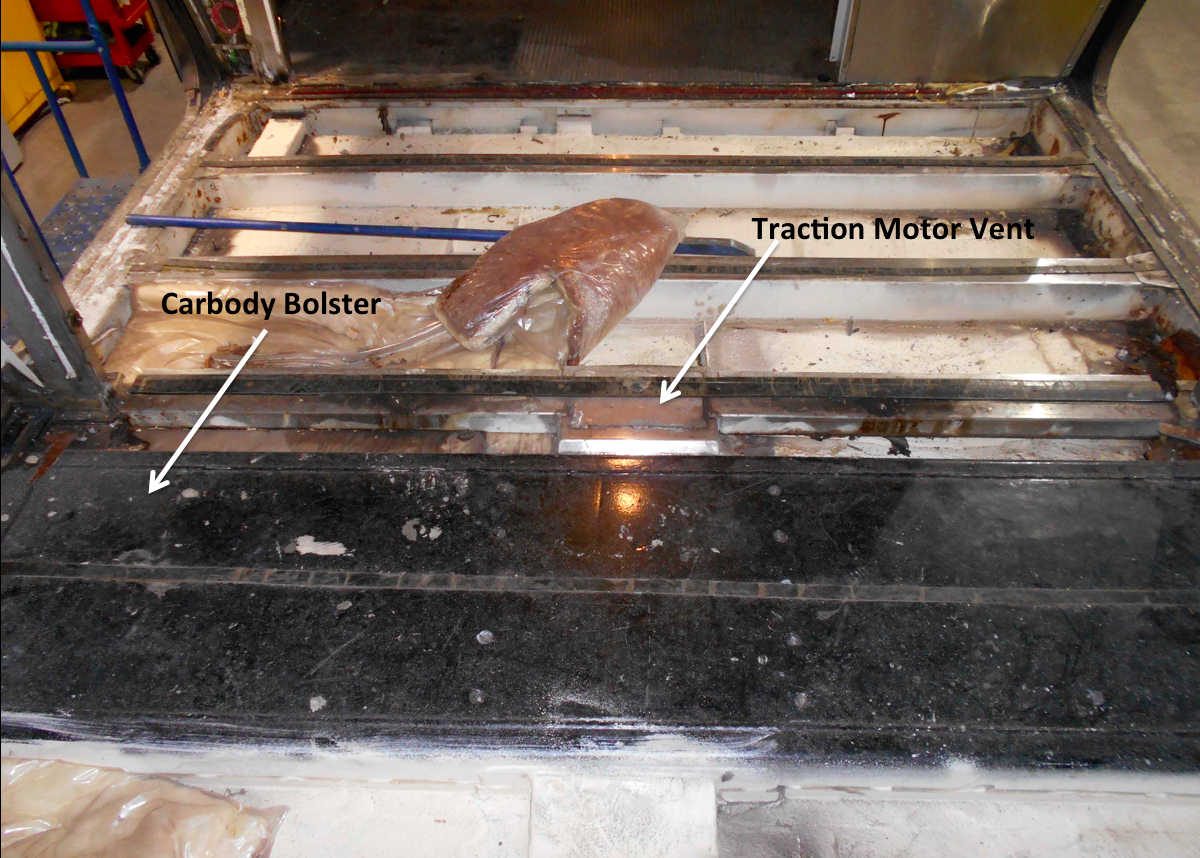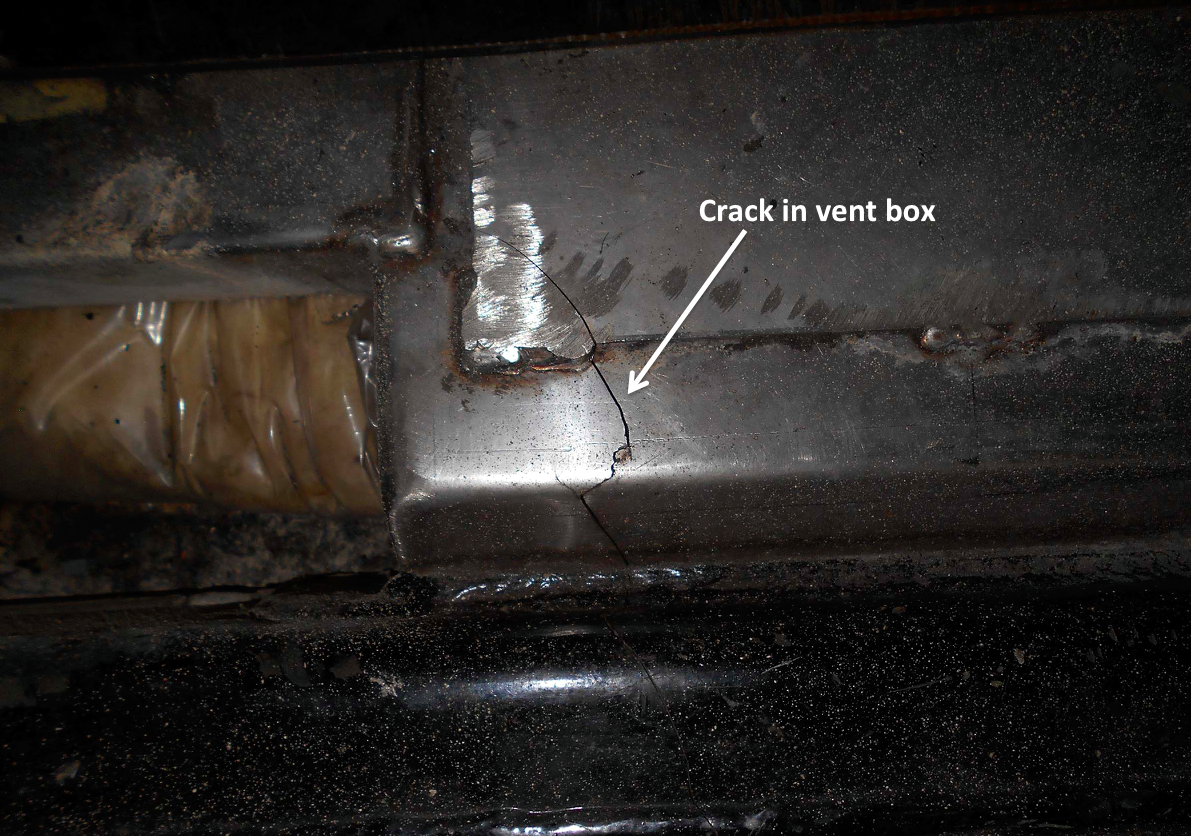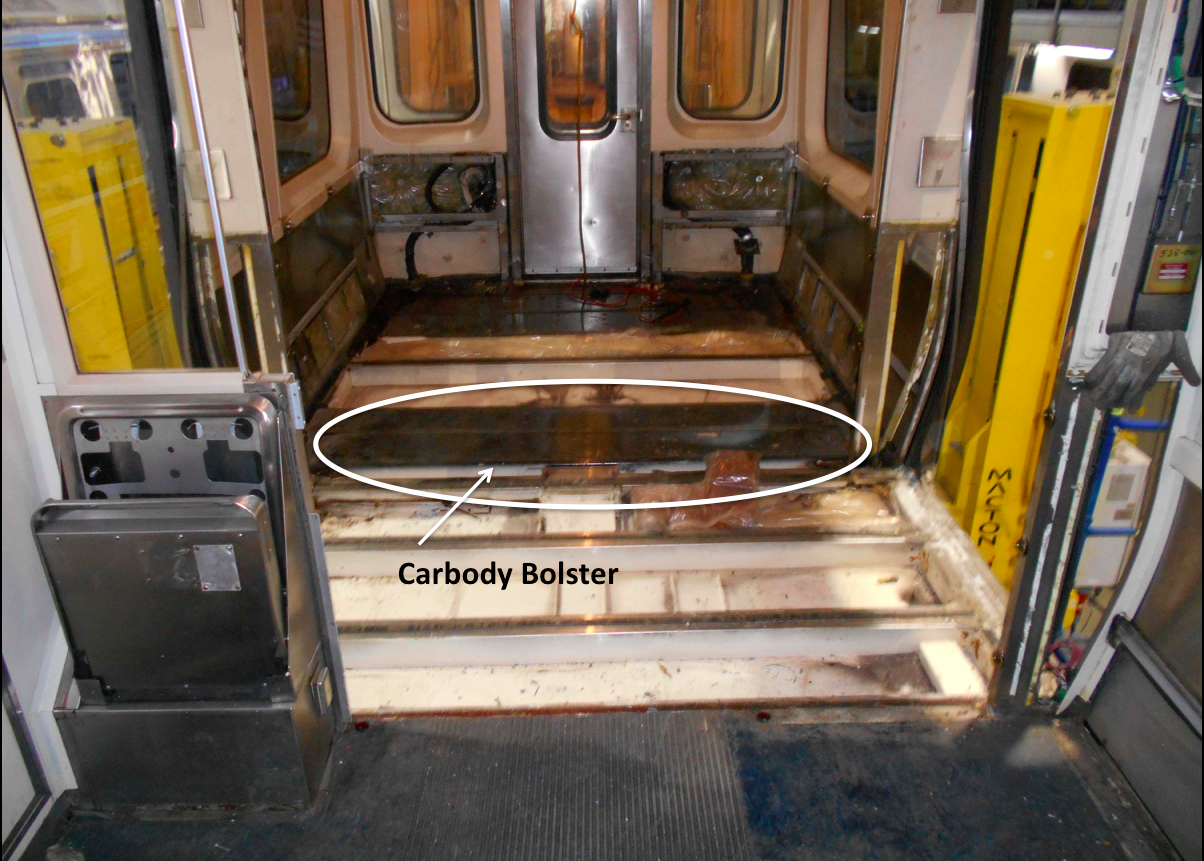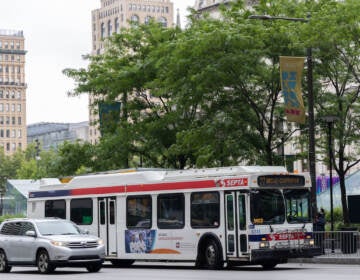SEPTA unsure how long mild MFL shortage will last
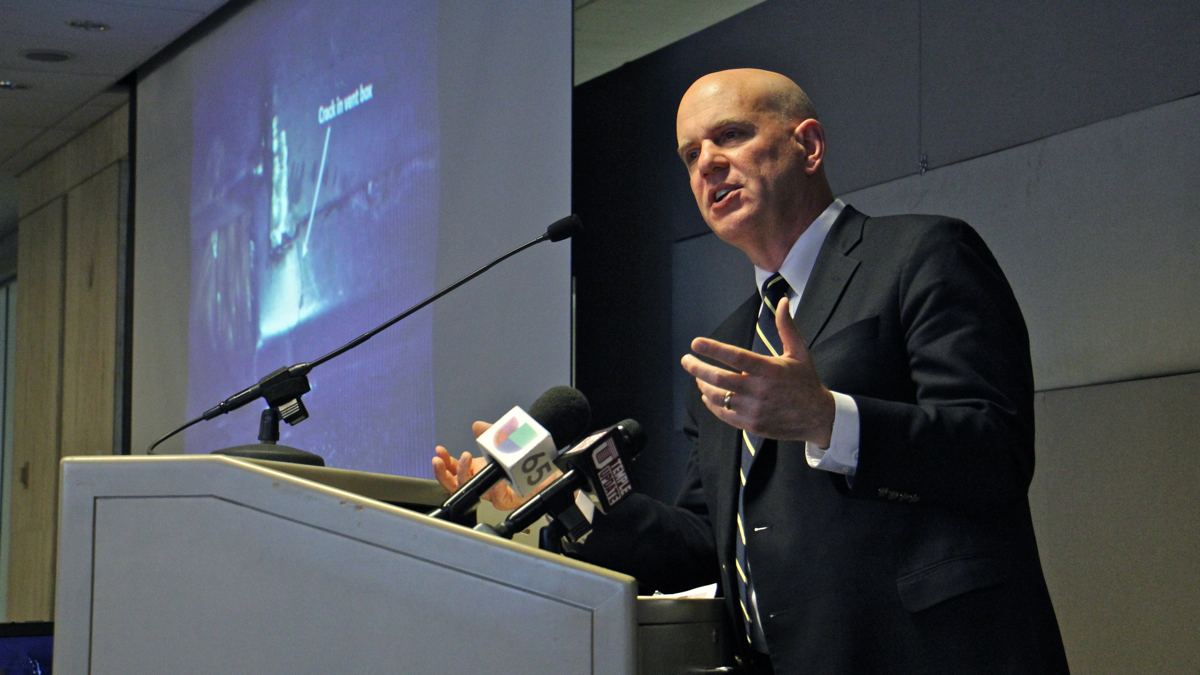
SEPTA has no idea how long it will take to fix the problem now sidelining 60 rail cars on the Market Frankford Line (MFL).
But as dire as that might sound, the practical effect seems muted: El trains ran every six minutes during this morning’s shortage, instead of their usual four minute headways. Trains were crowded, but not insufferably so. SEPTA set aside 60 buses to fill in for the pulled-cars, but only ended up using eight.
At a press conference monday, SEPTA General Manager Jeff Knueppel said the first crack was discovered by an union maintenance employee. “On Friday night, a septa mechanic was performing scheduled vehicle overhaul work at our 69th street shop. After removing a section of the car floor, he astutely noticed a crack in the main load carrying member called a carbody bolster.”
That car, No. 1091, had an eight-inch crack in its bolster, itself a 23-inch thick support beam. Another car had a similar crack in its bolster, and 58 more had cracks in track motor vents welded to the carbody bolsters.
All in all, SEPTA’s decision to suspend 60 MFL cars because of the cracks had little impact on the authority’s busiest route, which sees 187,000 daily weekday passengers. For comparison, all of SEPTA’s regional rail lines, combined, serve a little over 100,000 daily riders.
SEPTA has 108 rail cars running for Monday’s evening rush, short of the full complement of 144 rail cars, but still enough to maintain a high level of service.
After the initial discovery, SEPTA set about inspecting its all 220 of the M4 rail cars that run on the MFL. That uncovered another cracked carbody bolster and 58 other cars with cracked motor vents. The vents are welded to the carbody bolsters and are easier to inspect than the bolsters themselves. While cracked vent boxes wouldn’t themselves be much of a concern, the bolsters are vital support beams. SEPTA pulled every car with a cracked vent under the theory that cracks in the vent boxes might have spread to the two bolsters through a shoddy weld.
Knueppel agreed with a reporter who described the vent box fissures as a canary in the coal mine of sorts for the much more dangerous carbody bolster cracks.
“If you have a crack in the vent box, that would crack in any event—[you] wouldn’t have just a crack in the big giant bolster,” said Knueppel. If the bolster cracks, then so would the vent box, but not necessarily the other way around. Some union officials had criticized SEPTA management’s decision not to fully inspect every bolster, including those on railcars without cracked vents.
Emphasizing that he was “speculating” and adding that more metallurgical tests were ongoing, Knueppel blamed the problem on poor design.
“You have a beam you have an awful amount of time on, making sure it’s great and wonderful and welded well, and then you attach to it a vent box that’s just something bent around, folded up and put in a car with no thought of it becoming a structural member. But attach it rigidly to a structural member, and its functioning as a structural member,” said Knueppel “Then, it can crack and the crack can actually travel into the big member.”
Knueppel said it was too early to tell how much this might cost SEPTA. Knueppel did not know whether the parts or cars were under warranty or not—delivered between 1997 and 1999, it’s unlikely that the M4 cars built by AdTranz are still under some sort of service guarantee.
Knueppel also said that SEPTA was undergoing a full inspection of its entire rail fleet. The authority had recently finished inspection of all 120 of its Silverliner V Regional Rail cars and its Broad Street subway fleet when these MFL car cracks were discovered. Once all 220 of the M4s (218 revenue service cars, plus one “cash” car and one “trash” car) are inspected fully, SEPTA will turn to the remaining Regional Rail fleet of Silverliner IVs, then the Norristown High Speed Line trains, and finally the trolley fleet.
Bad welds were also to blame for the cracks that sidelined all of SEPTA’s Silverliner V cars over the summer.
SEPTA can’t pull rail cars from the Broad Street Line to run on the MFL. The track gauges—the width of the tracks—are different sizes, thanks to a nearsighted decision made nearly 100 years ago by the Philadelphia Rapid Transit Company (PRT), the private company that built the subway portion of the Market Frankford Line. PRT did not want any other railroads to be able to run their standard gauge trains on its tracks. Later, when the city of Philadelphia built the Broad Street Subway, it used standard gauge tracks, and then leased the line to PRT. SEPTA inherited that jumble, plus a few other nonfungible rail modes, when it was created in 1965.
WHYY is your source for fact-based, in-depth journalism and information. As a nonprofit organization, we rely on financial support from readers like you. Please give today.



